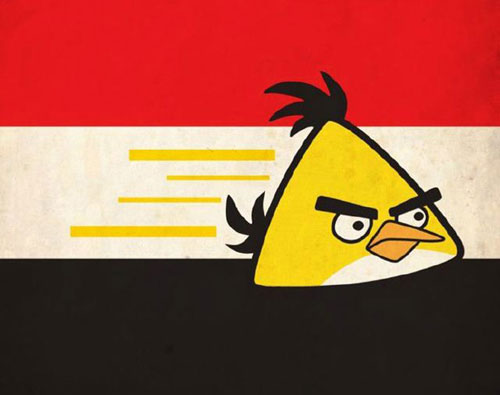Recently, the news wire service Reuters reported on a prospering art market in Cairo, where work inspired by the uprising earlier this year against former dictator Hosni Mubarak has attracted interested collectors from across the globe to the city's galleries, despite a growing threat of censorship from the military.

Anti-Mubarak graffiti can be spotted all around Cairo as artists take to the street to fight against supression. / Courtesy of Flickr via Remster_9
The vacuum of power left after the overthrow of Mubarak left room for Egyptian artists to express themselves more freely than has been allowed for generations. In the aftermath of the uprising, artists took to decorating the walls of buildings with street art, creating graphic design illustrations, publishing comic books, and producing photography showing pride in their movement as well as anger at the government and the violence of the revolution. People whose ideas had been suppressed during the Mubarak regime, such as the deaf-mute artist Hanan el-Narhrawy, quoted in the report, are allowed to spread their work without fear of retribution.
The outpouring of expression has attracted interest far beyond Cairo. Mona Said, the owner of the Safar Khan gallery in Cairo, told Reuters that she had a show of revolutionary artwork in March that was so popular that she sold four times the amount she originally anticipated and ended up shipping work to clients all over the globe.

Angry Birds gets an Egyptian spin. / Courtesy of wilyawil.comyoung woman had been questioned and will face a military tribunal for comments made over Twitter calling military rulers a "council of dogs" and threatening violence if the military did not uphold the rights of citizens. Reports coming out of Cairo suggest a culture of fear is creeping back into the Egyptian consciousness.
The military is not the only threat to free expression. Ironically, democratic rule could be just as bad. The Egyptian art community is also worried that if religious conservatives, such as the Islamist group the Salafists, are elected to positions of high power in government they will suppress artwork being produced that conveys liberal, secular, or non-Islamist ideas.
The current popularity of Egyptian revolutionary art is reminiscent of the commercialization and popularization of other kinds of revolutionary art. While an outbreak of populism and democracy drives these Egyptian artists, communist and socialist propaganda has also proved fertile for artistic movements in China, Russian, and North Korea. Socialist realism has developed a strong market demand and has been showcased in museums including the Guggenheim.
-Shane Ferro, ARTINFO
More of Today's News from ARTINFO:
Is the Market For Egyptian Art Undergoing Its Own Revolution?
Happy Birthday, Coco! A Q&A with Chanel's Biographer on the Fashion Legend's Drug Use, Swinging Sex Life, and Nazi Ties
Has Relational Aesthetics Migrated Online? How the Internet's New Social Spaces Empower Creative Audiences
The Secret History of Marcel van Eeden
Why Chinese Street Art Hasn't Become a Market Phenomenon -- Yet
Like what you see? Sign up for ARTINFO's daily newsletter to get the latest on the market, emerging artists, auctions, galleries, museums, and more.